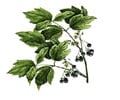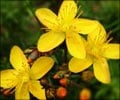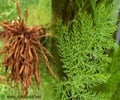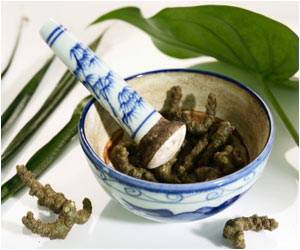Some 50 million Americans have hypertension, that is, blood pressure measuring above the normal range (less than 120/80 mmHg). If untreated, it can lead to heart attacks, strokes…
Some 50 million Americans have hypertension, that is, blood pressure measuring above the normal range (less than 120/80 mmHg). If untreated, it can lead to heart attacks, strokes, or kidney disease. Lifestyle changes are the first-stage treatment for the disease, but if they fail, medications are prescribed.
Many patients with high blood pressure have sought relief from complementary and alternative medicine (CAM). In so doing, many have consumed danshen, a Chinese herb used in Oriental medicine that promotes blood flow and treats cardiovascular disease.Tanshinone IIA is an active ingredient of danshen. Since tanshinone IIA is widely available, a team of researchers has used it to investigate if this active ingredient can reduce blood pressure. In a soon-to-be-released study, using an animal model, the scientists have found that tanshinone IIA does reduce blood pressure.
Summary of Methodology
To assess the effect of tanshinone IIA, the protocol consisted of several parts. The researchers applied the 2-kidney-1-clip protocol to induce renal hypertension in male golden Syrian hamsters. The animals were anesthetized and a retroperitoneal approach was used to place a silver clip to constrict the right renal artery. Sham-operated hamsters and mice underwent the same procedure, except for the placement of a clip.
Both sets of hamsters received 50 ¦Ìg of tanshinone IIA/100g of body weight once a day for two weeks. After the two-week treatment period, mean arterial blood pressure was measured in the right carotid artery. To examine the microvascular actions of tanshinone IIA researchers applied it topically to the hamsters¡¯ cheek pouch or mice cremaster muscles to achieve the final concentration of one ¦Ìg/ml or five ¦Ìg/ml. After the application of tanshinone IIA, the experiment was continued for an additional 60-minute period in order to measure arteriolar diameter and peri-arteriolar nitric oxide concentration.
Results
Advertisement
The research team also discovered that tanshinone IIA caused widening of the arterioles in the hamster cheek pouch microcirculation via enhanced expression of endothelial nitric oxide synthase. The topical application of tanshinone IIA at one ¦Ìg/ml and five ¦Ìg/ml caused significant dose-related vasodilation, indicated by the increased agent/control ratio of arteriolar diameters from 1.0 to 1.25¡À0.08 and 1.57¡À0.11, respectively, in the hamster cheek pouch. The increase in arteriolar diameter ratio was significant relative to the vehicle for each concentration as well as for comparison between the two concentrations of tanshinone IIA.
Advertisement
As a result of the findings the researchers concluded that tanshinone IIA: (1) significantly reduced blood pressure in hamsters, (2) enhanced the expression of endothelial nitric oxide synthase, (3) increased the production of nitric oxide and (4) induced blood pressure changes through vasodilation in hamster blood microvessels. While the mechanisms of how tanshinone IIA or danshen work in hypertension are not yet fully understood, these results contribute to the effort to bring complementary and alternative medicine and allopathic care closer together in the treatment of hypertensive patients.
Source-Eurekalert
SRM










